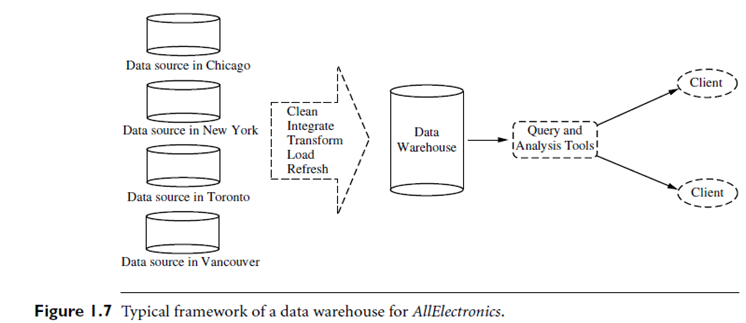Data-warehouses
Introduction: Suppose that AllElectronics is a successful international company, with branches around the world. Each branch has its own set of databases. The president of All Electronics has asked you to provide an analysis of the company’s sales per item type per branch for the third quarter. This is a difficult task, particularly since the relevant data are spread out over several databases, physically located at numerous sites.
If AllElectronics had a data warehouse, this task would be easy. A data warehouse is a repository of information collected from multiple sources, stored under a unified schema, and that usually resides at a single site. Data warehouses are constructed via a process of data cleaning, data integration, data transformation, data loading, and periodic data refreshing. Figure 1.7 shows the typical framework for construction and use of a data warehouse for AllElectronics.

To facilitate decision making, the data in a data warehouse are organized around major subjects, such as customer, item, supplier, and activity. The data are stored to provide information from a historical perspective (such as from the past 5–10 years) and are typically summarized. For example, rather than storing the details of each sales transaction, the data warehouse may store a summary of the transactions per item type for each store or, summarized to a higher level, for each sales region.
A data warehouse is usually modeled by a multidimensional database structure, where each dimension corresponds to an attribute or a set of attributes in the schema, and each cell stores the value of some aggregate measure, such as count or sales amount.
The actual physical structure of a data warehouse may be a relational data store or a multidimensional data cube. A data cube provides a multidimensional view of data and allows the pre-computation and fast accessing of summarized data.